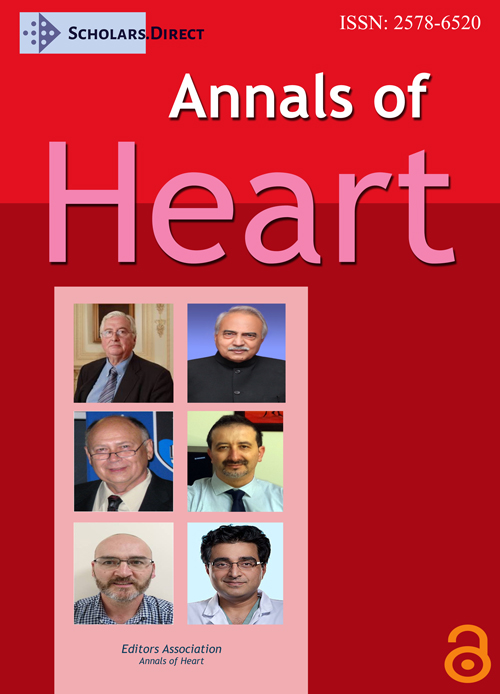
ISSN: 2578-6520
Annals of Heart is an open access, peer reviewed journal dedicated to publish experimental and descriptive articles on the clinical, pathological and management of Heart. The journal is committed to share and discuss various aspects related but not limited to structure, development, physiology, pathology, historical understanding, modern advancements in treatment mode, clinical significance such as diagnosis, treatment and surgery of heart, etc. All the manuscripts published by Annals of Heart are made available freely with unrestricted use and reuse.
Annals of Heart is specially featured with electronically manageable Tracking system to track their status with an ease at any point of time. It gives author an excellent feature to publish quality images, large datasets, limitless table or figure illustrations, supplementary data's, etc. All the scientific content undergoes strict evaluation by expertise peers. The authors of published articles retain the copyrights and are free to distribute. The journal adheres to the standards of Creative Common Attribution License.
The journal offers high visibility and insight to the quality publications and help discussing issues of importance to the scientific community. Diffusing Awareness in the community is a powerful tool for improving human health care.

Emeritus Professor
Director of Thrombosis Research
Lillehei Heart Institute
University of Minnesota
United States of America

Clinical Professor
Department of heart surgery
Columbia University Medical Center
United States of America
Tel: 212-523-2798

Director
Transplant Research
Tampa Transplant Institute
Florida, United States of America
Tel: 813-503-3991

Professor
Surgical Treatment of Heart Failure
G D Annunzio University
Italy
Tel: +393286687638

Professor
University of Stirling
Scotland
United Kingdom
Tel: 01463-250866

Professor
Department of Surgery
University of Toronto
Canada
Tel: 416-864-5997
Submit your manuscript to this journal through online or email us at editorialoffice@scholars.direct

Review Article
Stress Echocardiography for Detection and Assessment of Coronary Heart Disease. The Early Years
Stress echocardiography has been evolved over the last few decades as an important diagnostic, prognostic and follow up investigation, in clinical pra... Read more

Research Article
Expression of PDGF-D in Patients with Valvular Atrial Fibrillation
A total of 84 patients who needed valve replacement due to rheumatic heart disease were selected. There were 39 patients in the atrial fibrillation gr... Read more

Intervention Study
In the literatures, there is still argument regarding whether female gender is correlated with worse outcome following percutaneous coronary intervent... Read more

Case Study
A 74-year-old male with history of paroxysmal atrial fibrillation started on Apixaban in 2017, hypertension, coronary artery disease without angiograp... Read more

Original Study
Long-term risk stratification in non-ST-elevation acute coronary syndrome (NSTE-ACS) by the ACEF score has not yet been assessed. The ACEF score (age/... Read more

Case Study
Left Atrial Appendage Thrombus Resolution with Clopidogrel after Apixaban Failure: A Case Series
This hypothesis-generating, case series reviews the evidence available for managing left atrial appendage thrombus in patients already on therapeutic ... Read more

Original Study
In particular settings, achieving complete coronary revascularization could be very challenging. The Syntax Revascularization Index (SRI) represents a... Read more

Original Study
Early versus Delayed Invasive Intervention in NSTE-ACS: Clinical Outcomes
The aim of this study was to compare an early versus a delayed invasive strategy in NSTE-ACS prospectively. Prospective observational study including ... Read more

Review Article
High Density Lipoprotein as a Biomarker, Potential Therapeutic Target and Therapy
HDL is a plasma lipoprotein with the function of reverse cholesterol transport and inflammation modulation. Studies suggest that HDL can function as b... Read more

Original Article
Qtc Interval Dispersion in Patients with Acute Stroke
QT, QTc interval and QTc dispersion express the inhomogeneity of left ventricular repolarization time. Its extension results in an increase of vulnera... Read more